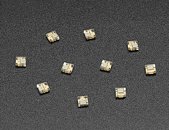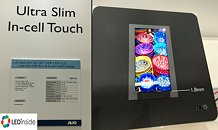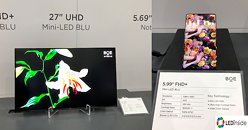Raevenlord
News Editor
- Joined
- Aug 12, 2016
- Messages
- 3,755 (1.23/day)
- Location
- Portugal
| System Name | The Ryzening |
|---|---|
| Processor | AMD Ryzen 9 5900X |
| Motherboard | MSI X570 MAG TOMAHAWK |
| Cooling | Lian Li Galahad 360mm AIO |
| Memory | 32 GB G.Skill Trident Z F4-3733 (4x 8 GB) |
| Video Card(s) | Gigabyte RTX 3070 Ti |
| Storage | Boot: Transcend MTE220S 2TB, Kintson A2000 1TB, Seagate Firewolf Pro 14 TB |
| Display(s) | Acer Nitro VG270UP (1440p 144 Hz IPS) |
| Case | Lian Li O11DX Dynamic White |
| Audio Device(s) | iFi Audio Zen DAC |
| Power Supply | Seasonic Focus+ 750 W |
| Mouse | Cooler Master Masterkeys Lite L |
| Keyboard | Cooler Master Masterkeys Lite L |
| Software | Windows 10 x64 |
According to a report by DigiTimes, panel-maker AU Optronics is looking to ship gaming panels with built-in mini-LED technology going into the 4Q 2018. This isn't a new display tech, and shouldn't be confused with Micro LED tech, which is hailed as the great coming of an OLED killer. Despite that, mini-LED remains a very interesting, likely crucial piece of technology in enabling much increased color accuracy and contrast ratios of current panel technology - thus also bettering HDR implementations.
Usually, a given monitor or TV features Edge-lit LED technology to achieve the backlighting necessary for image display (or in the case of OLED, there's no need for any of that, since it's a self-emissive technology). In recent times, contrast ratios have been increased by the introduction of local dimming (essentially, there are multiple LED lighting units across the entirety of the monitor or TV, which can be singularly controlled to achieve desired lighting ratios). Mini-LED technology brings this a leap further, allowing for an enormous increase in lighting zones - up to the tens of thousands, compared, for example, to the 384 local dimming units present on the recently released 4K, 144 Hz G-Sync monitors - of which AUO did sample specification-like panels but with this added mini-LED tech. Of course, these "tens of thousands" still pale in comparison to an OLED panel's pixel-count-like dimmable LEDs. As a bonus, panel thickness can also be reduced with mini-LED tech.



View at TechPowerUp Main Site
Usually, a given monitor or TV features Edge-lit LED technology to achieve the backlighting necessary for image display (or in the case of OLED, there's no need for any of that, since it's a self-emissive technology). In recent times, contrast ratios have been increased by the introduction of local dimming (essentially, there are multiple LED lighting units across the entirety of the monitor or TV, which can be singularly controlled to achieve desired lighting ratios). Mini-LED technology brings this a leap further, allowing for an enormous increase in lighting zones - up to the tens of thousands, compared, for example, to the 384 local dimming units present on the recently released 4K, 144 Hz G-Sync monitors - of which AUO did sample specification-like panels but with this added mini-LED tech. Of course, these "tens of thousands" still pale in comparison to an OLED panel's pixel-count-like dimmable LEDs. As a bonus, panel thickness can also be reduced with mini-LED tech.



View at TechPowerUp Main Site



